 Search by Keyword
|
“TAXMAN”
(George Harrison)
“Unlike our previous LPs, this one is intended to show our versatility rather than a haphazard collection of songs…George has written three of the tracks. On past LPs he never did more than two.”
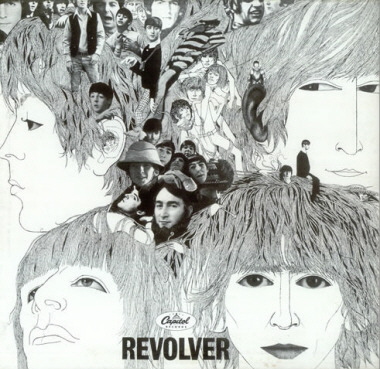 This quote from Paul McCartney, dated near the release date of the album “Revolver” in 1966, emphasizes the increased output George Harrison had been afforded by that time. "I used to say to myself, 'I'm sure I can write,' but it was difficult because of John and Paul," George stated about his burgeoning songwriting career in the September 1966 edition of The Beatles Book Monthly fan magazine. "It was very hard for me to come straight to the top - on par with them, instead of building up like they did. I've thrown away about thirty songs. I didn't think they were strong enough." This quote from Paul McCartney, dated near the release date of the album “Revolver” in 1966, emphasizes the increased output George Harrison had been afforded by that time. "I used to say to myself, 'I'm sure I can write,' but it was difficult because of John and Paul," George stated about his burgeoning songwriting career in the September 1966 edition of The Beatles Book Monthly fan magazine. "It was very hard for me to come straight to the top - on par with them, instead of building up like they did. I've thrown away about thirty songs. I didn't think they were strong enough."
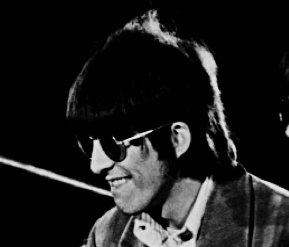 With many months of rest since their last British tour of December 1965, his songwriting, like that of John and Paul, transcended the boundaries of popular music into whichever subject matter or direction that he wanted it to. "I wouldn’t say that my songs are autobiographical," George Harrison later explained. "‘Taxman’ is, perhaps. The early ones were just any words I could think of." With many months of rest since their last British tour of December 1965, his songwriting, like that of John and Paul, transcended the boundaries of popular music into whichever subject matter or direction that he wanted it to. "I wouldn’t say that my songs are autobiographical," George Harrison later explained. "‘Taxman’ is, perhaps. The early ones were just any words I could think of."
Songwriting History
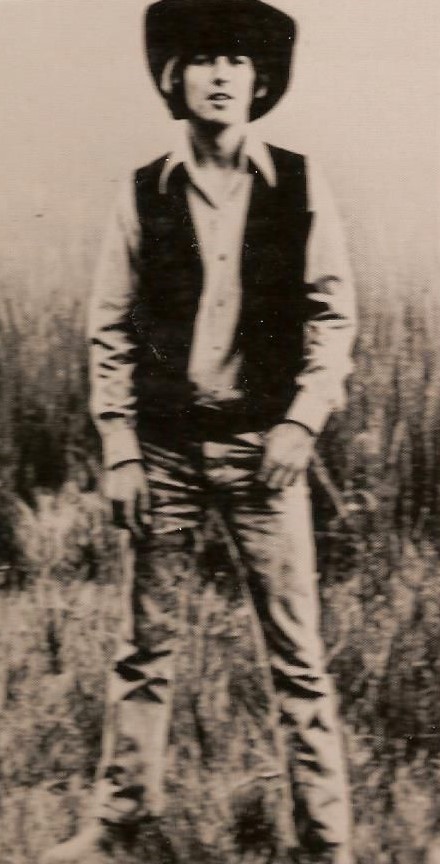 George Harrison has been very vocal throughout his life about his inspiration for “Taxman.” “I had discovered I was paying a huge amount of money to the taxman,” George once explained in an interview. “You are so happy that you’ve finally started earning money – and then you find out about tax. In those days we paid nineteen shillings and sixpence out of every pound (there were twenty shillings in the pound), and with supertax and surtax and tax-tax it was ridiculous – a heavy penalty to pay for making money…It was, and still is, typical. Why should this be so? Are we being punished for something we have forgotten to do?...That was the big turn-off for Britain. Anybody who ever made any money moved to America or somewhere else.” George Harrison has been very vocal throughout his life about his inspiration for “Taxman.” “I had discovered I was paying a huge amount of money to the taxman,” George once explained in an interview. “You are so happy that you’ve finally started earning money – and then you find out about tax. In those days we paid nineteen shillings and sixpence out of every pound (there were twenty shillings in the pound), and with supertax and surtax and tax-tax it was ridiculous – a heavy penalty to pay for making money…It was, and still is, typical. Why should this be so? Are we being punished for something we have forgotten to do?...That was the big turn-off for Britain. Anybody who ever made any money moved to America or somewhere else.”
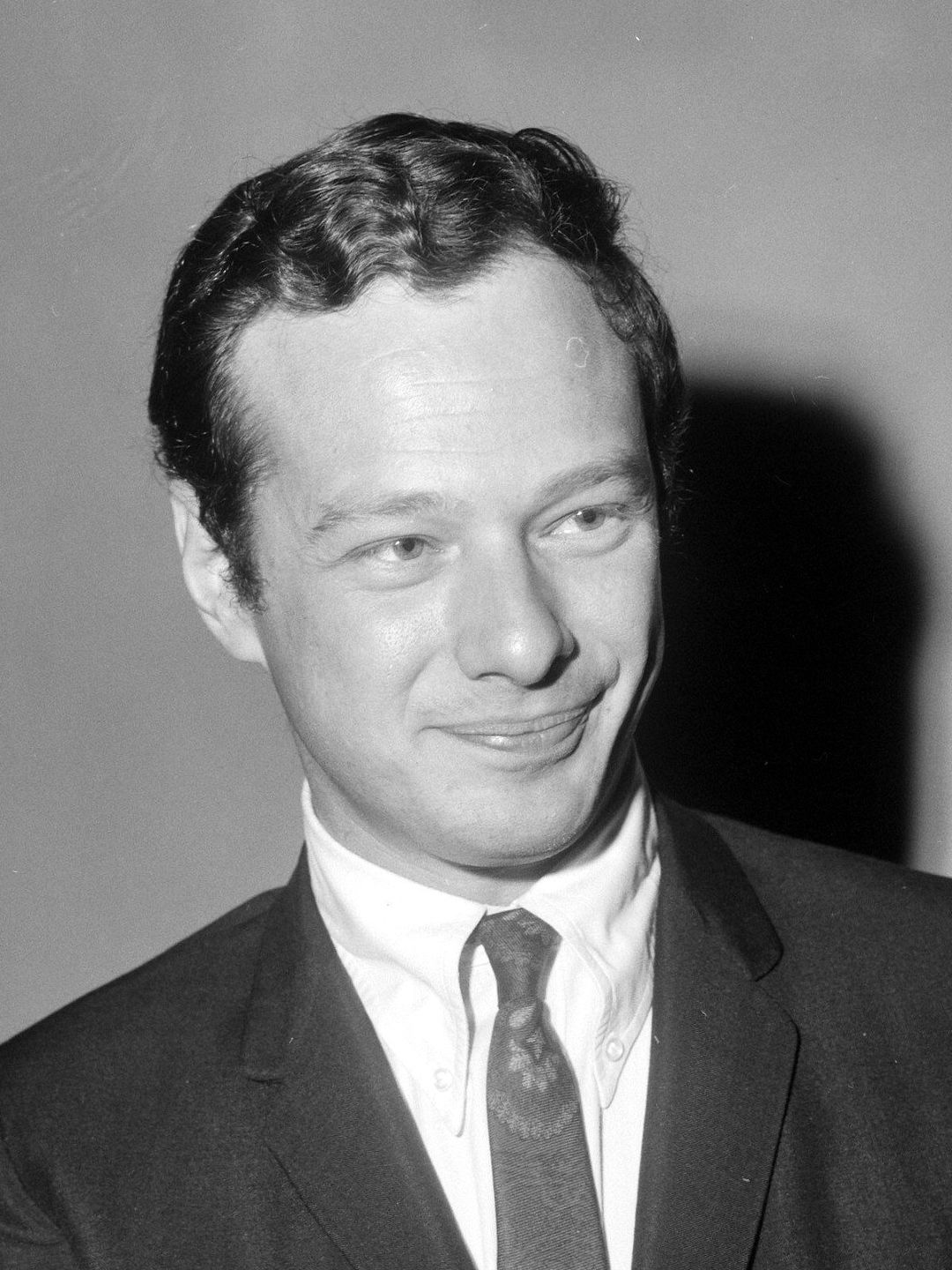 Although George was the Beatle who paid the most attention to their financial situation, the others were aware as well. “We were pissed off with the tax situation,” remembers Ringo. “We went into one mad scheme where we paid a guy to go and live in the Bahamas and hold our money for us so it would be tax-free. And in the end we had to bring all they money back, pay the taxes on it and pay this guy. So we might as well have just left it where it was. It was a scheme that someone had put forward with Brian (Epstein) and we went for it.” Although George was the Beatle who paid the most attention to their financial situation, the others were aware as well. “We were pissed off with the tax situation,” remembers Ringo. “We went into one mad scheme where we paid a guy to go and live in the Bahamas and hold our money for us so it would be tax-free. And in the end we had to bring all they money back, pay the taxes on it and pay this guy. So we might as well have just left it where it was. It was a scheme that someone had put forward with Brian (Epstein) and we went for it.”
 “’Taxman’ was very George,” explained McCartney, adding, “In business meetings, the solicitors and accountants would be explaining to us how things worked. We were very naïve, as you can see by any of our business deals, and George would say, ‘Well, I don’t want to pay tax,’ and they’d say, ‘You’ve got to, like everyone else – and the more you make, the more they take.’ And George would reply, ‘Well, that’s not very fair.’ They said, ‘Look, when you’re dead you’re going to pay taxes,’ – ‘What?’ – ‘Death duties.’ So he came up with that great line: ‘Decalre the pennies on your eyes,’ which was George’s righteous indignation at the whole idea of having got here, made all this money and half of it was about to be removed by force.” “’Taxman’ was very George,” explained McCartney, adding, “In business meetings, the solicitors and accountants would be explaining to us how things worked. We were very naïve, as you can see by any of our business deals, and George would say, ‘Well, I don’t want to pay tax,’ and they’d say, ‘You’ve got to, like everyone else – and the more you make, the more they take.’ And George would reply, ‘Well, that’s not very fair.’ They said, ‘Look, when you’re dead you’re going to pay taxes,’ – ‘What?’ – ‘Death duties.’ So he came up with that great line: ‘Decalre the pennies on your eyes,’ which was George’s righteous indignation at the whole idea of having got here, made all this money and half of it was about to be removed by force.”
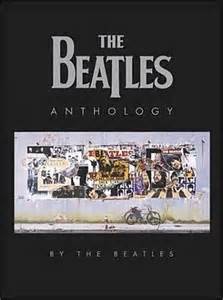 For those who may feel that George’s statement about the amount of taxes they had to pay in Britain was exaggerated, in the book “Beatles Anthology” there is shown what appears to be a Tax Appeals form that states, in part: "The Beatles are in the 90% tax bracket. Accordingly, in order for them to personally give the 615,000 gift, they would have to earn 6150,000." George was also concerned about what his taxes were used for, as indicated in the article "How A Beatle Lives" in the March 18th, 1966 edition of the Evening Standard. Interviewer Maureen Cleave wrote, "His views are disconcertingly simple. He thinks his personal taxes are going directly to pay for F-111's (American jet fighters in development). He sees (UK prime minister Harold) Wilson as the Sheriff Of Nottingham 'taking all the money,' he said, 'and then moaning about deficits here, deficits there - always moaning about deficits.'" For those who may feel that George’s statement about the amount of taxes they had to pay in Britain was exaggerated, in the book “Beatles Anthology” there is shown what appears to be a Tax Appeals form that states, in part: "The Beatles are in the 90% tax bracket. Accordingly, in order for them to personally give the 615,000 gift, they would have to earn 6150,000." George was also concerned about what his taxes were used for, as indicated in the article "How A Beatle Lives" in the March 18th, 1966 edition of the Evening Standard. Interviewer Maureen Cleave wrote, "His views are disconcertingly simple. He thinks his personal taxes are going directly to pay for F-111's (American jet fighters in development). He sees (UK prime minister Harold) Wilson as the Sheriff Of Nottingham 'taking all the money,' he said, 'and then moaning about deficits here, deficits there - always moaning about deficits.'"
 This subject was very much on George's mind at that time, evidenced also by his early 1966 interview with radio broadcaster Tom Lodge at Radio Caroline. George stated, "They can't take the taxes down, 'cause they haven't got enough money. And they'll never have enough money while they're buying crap like F-111s, Harold! Which they've proved they're no use whatsoever...So if they pay off a few of the bloody debts then maybe they'd be able to cut the tax down a little, Harold?" This subject was very much on George's mind at that time, evidenced also by his early 1966 interview with radio broadcaster Tom Lodge at Radio Caroline. George stated, "They can't take the taxes down, 'cause they haven't got enough money. And they'll never have enough money while they're buying crap like F-111s, Harold! Which they've proved they're no use whatsoever...So if they pay off a few of the bloody debts then maybe they'd be able to cut the tax down a little, Harold?"
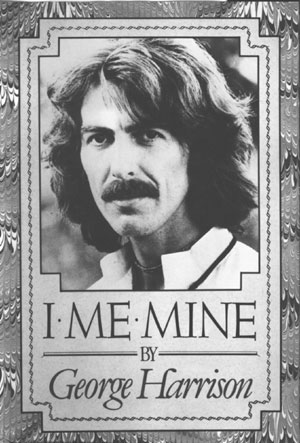 Although George Harrison is always credited as the song's sole songwriter, this apparently wasn’t the case. “George wrote it and I helped him with it,” Lennon stated in 1968. In an interview with David Sheff in December of 1980, he elaborated further: "I remember the day he called to ask for help on ‘Taxman,’ one of his first songs. I threw in a few one-liners to help the song along because that’s what he asked for. He came to me because he couldn’t go to Paul. Paul wouldn’t have helped him in that period. I didn’t want to do it. It's enough doing my own and Paul's. But because I loved him...I just sort of bit my tongue and said 'OK.' It had been John and Paul for so long; he’d been left out because he hadn’t been a songwriter up until then." Since George failed to acknowledge his contribution to the song in his 1980 book "I Me Mine," John added, "I am slightly resentful of George's book. But don't get me wrong. I still love those guys." In 1987, George responded, "I didn't say he'd written one line of the song 'Taxman,' but I also didn't say how I wrote two lines of 'Come Together' or three lines of 'Eleanor Rigby,' you know - I wasn't getting into any of that." Although George Harrison is always credited as the song's sole songwriter, this apparently wasn’t the case. “George wrote it and I helped him with it,” Lennon stated in 1968. In an interview with David Sheff in December of 1980, he elaborated further: "I remember the day he called to ask for help on ‘Taxman,’ one of his first songs. I threw in a few one-liners to help the song along because that’s what he asked for. He came to me because he couldn’t go to Paul. Paul wouldn’t have helped him in that period. I didn’t want to do it. It's enough doing my own and Paul's. But because I loved him...I just sort of bit my tongue and said 'OK.' It had been John and Paul for so long; he’d been left out because he hadn’t been a songwriter up until then." Since George failed to acknowledge his contribution to the song in his 1980 book "I Me Mine," John added, "I am slightly resentful of George's book. But don't get me wrong. I still love those guys." In 1987, George responded, "I didn't say he'd written one line of the song 'Taxman,' but I also didn't say how I wrote two lines of 'Come Together' or three lines of 'Eleanor Rigby,' you know - I wasn't getting into any of that."
While we can’t say for sure what John’s lyric contributions were to "Taxman," we can examine George’s original handwritten lyric sheet to see his first draft of the song and deduce that what was replaced could very well have come from Lennon’s pen. The original lyrics were:
“Now, let me tell you how it will be.
There’s one for you, nineteen for me.
Cos I’m the Tax man, yes I’m the tax-man-
You may work hard trying to get some bread-
You won’t make out before you’re dead-
Cos I’m the tax man - yes I’m the tax man
And you’re working for no-one but me –
So give in to conformity.
Now what I let you keep for free –
Won’t take long to get back to me –
Cos I’m the tax man – yes I’m the tax man.”
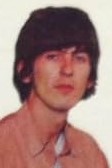 A quote from Paul in 1984 could be used as a clue to give a closer glimpse of when exactly the song was written: “He wrote it in anger at finding out what the taxman did. He had never known before then what could happen to your money.” If this statement can be taken at face value, and noticing that the financial statement mentioned above includes a date of April 6th, 1966, it could be ascertained that the song was completely written in April of that year. The background vocals mentioning “Mister Wilson” and “Mister Heath,” which may be considered by some as part of the composition, were added to the recording on April 22nd, therefore making it the date of completion for the writing of “Taxman.” A quote from Paul in 1984 could be used as a clue to give a closer glimpse of when exactly the song was written: “He wrote it in anger at finding out what the taxman did. He had never known before then what could happen to your money.” If this statement can be taken at face value, and noticing that the financial statement mentioned above includes a date of April 6th, 1966, it could be ascertained that the song was completely written in April of that year. The background vocals mentioning “Mister Wilson” and “Mister Heath,” which may be considered by some as part of the composition, were added to the recording on April 22nd, therefore making it the date of completion for the writing of “Taxman.”
Recording History
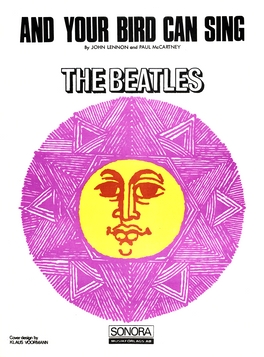 On April 20th, 1966, which was the ninth of thirty-two recording sessions that comprised the “Revolver” album, the group entered EMI Studio Two at 2:30 in the afternoon to begin two new contenders for the album. “And Your Bird Can Sing” was first recorded and mixed, although much more work was to be done on this song later. The second new song of the day was “Taxman,” George teaching the song to the group from scratch. Four instrumental run-throughs of the song were put to tape, only two of them making it through the entire song, with George's guitar, Paul's bass and Ringo's drums all being recorded onto track one of the four-track tape. Captured on tape at the end of “take four” was much discussion about the proposed structuring of the song. Since no vocals were recorded, John suggests, "Sing a little bit, cowboy," to which Paul replies, "That would help, wouldn't it?" Ringo expressed concern about the bridge of the song by stating, "That middle-eight doesn't seem right." At 2:30 am the next morning, after twelve hours of work with nothing on tape that ended up being used on the final album, they called it a night with renewed enthusiasm for the session that would begin the following afternoon. On April 20th, 1966, which was the ninth of thirty-two recording sessions that comprised the “Revolver” album, the group entered EMI Studio Two at 2:30 in the afternoon to begin two new contenders for the album. “And Your Bird Can Sing” was first recorded and mixed, although much more work was to be done on this song later. The second new song of the day was “Taxman,” George teaching the song to the group from scratch. Four instrumental run-throughs of the song were put to tape, only two of them making it through the entire song, with George's guitar, Paul's bass and Ringo's drums all being recorded onto track one of the four-track tape. Captured on tape at the end of “take four” was much discussion about the proposed structuring of the song. Since no vocals were recorded, John suggests, "Sing a little bit, cowboy," to which Paul replies, "That would help, wouldn't it?" Ringo expressed concern about the bridge of the song by stating, "That middle-eight doesn't seem right." At 2:30 am the next morning, after twelve hours of work with nothing on tape that ended up being used on the final album, they called it a night with renewed enthusiasm for the session that would begin the following afternoon.
 April 21st, 1966 was that next session, which also began at 2:30 pm in EMI Studio Two. This session extended over ten hours, moving into the next day once again. All of this time was spent on “Taxman” which, because it was a George Harrison song, was quite a bit unusual. “George Martin always seemed a bit concerned about both the quality of Harrison’s compositions and the amount of time being spent on them, which tended to make Harrison a bit self-conscious,” recalled engineer Geoff Emerick in his book “Here, There And Everywhere.” The amount of time spent on his song, therefore, must have delighted George, or so it would seem. April 21st, 1966 was that next session, which also began at 2:30 pm in EMI Studio Two. This session extended over ten hours, moving into the next day once again. All of this time was spent on “Taxman” which, because it was a George Harrison song, was quite a bit unusual. “George Martin always seemed a bit concerned about both the quality of Harrison’s compositions and the amount of time being spent on them, which tended to make Harrison a bit self-conscious,” recalled engineer Geoff Emerick in his book “Here, There And Everywhere.” The amount of time spent on his song, therefore, must have delighted George, or so it would seem.
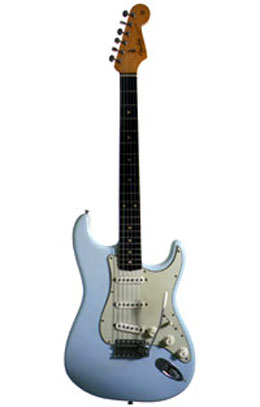 After much arrangement discussion and rehearsal, the band delved into recording the rhythm track, which consisted of George on electric rhythm guitar, Paul on bass and Ringo on drums (John appears to have sat out entirely on the rhythm track). All three of these elements were recorded onto track one of the four-track tape, just like the rehearsal recordings done on the previous day. No vocals were recorded during the rhythm track except for a simple “one, two, three, four” from George to count off the song. The song included a complete ending at this point which comprises three strummed chords and a cymbal crash. It took eleven takes of the rhythm track (only four of them complete) to get one that was deemed suitable, although there was no "take five" because of an apparent mis-count by the engineer. Overdubs were then set to be recorded onto "take eleven," this being deemed the best. After much arrangement discussion and rehearsal, the band delved into recording the rhythm track, which consisted of George on electric rhythm guitar, Paul on bass and Ringo on drums (John appears to have sat out entirely on the rhythm track). All three of these elements were recorded onto track one of the four-track tape, just like the rehearsal recordings done on the previous day. No vocals were recorded during the rhythm track except for a simple “one, two, three, four” from George to count off the song. The song included a complete ending at this point which comprises three strummed chords and a cymbal crash. It took eleven takes of the rhythm track (only four of them complete) to get one that was deemed suitable, although there was no "take five" because of an apparent mis-count by the engineer. Overdubs were then set to be recorded onto "take eleven," this being deemed the best.
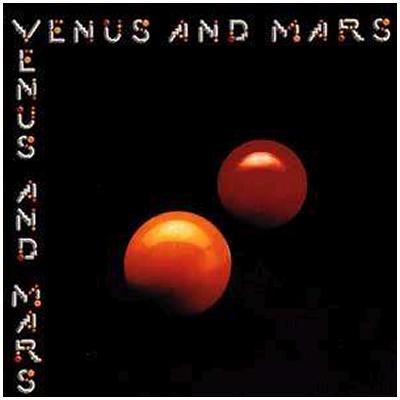 The overdubs consisted of George singing lead vocals with Paul on harmony vocals during the "yeah, I'm the taxman" lyrics, this being recorded onto track three of the tape. Interestingly, Paul began this overdub using a croaky voice (not unlike what he used to introduce his 1975 track "Listen To What The Man Said" on the Wings album "Venus And Mars") to count off the song while other incidental sounds and coughs were heard in the background, this being retained to introduce the song as well as the "Revolver" album. George and Paul then overdubbed their vocal parts (minus Paul's croaky introduction) onto track four of the tape. Another interesting note here is that they intentionally twice included the lyrical exclamation "Taxmaaaan!" in imitation of the US hit song "Batman Theme" by The Marketts, which reached #17 in America the month before, this being a song The Beatles were familiar with. The overdubs consisted of George singing lead vocals with Paul on harmony vocals during the "yeah, I'm the taxman" lyrics, this being recorded onto track three of the tape. Interestingly, Paul began this overdub using a croaky voice (not unlike what he used to introduce his 1975 track "Listen To What The Man Said" on the Wings album "Venus And Mars") to count off the song while other incidental sounds and coughs were heard in the background, this being retained to introduce the song as well as the "Revolver" album. George and Paul then overdubbed their vocal parts (minus Paul's croaky introduction) onto track four of the tape. Another interesting note here is that they intentionally twice included the lyrical exclamation "Taxmaaaan!" in imitation of the US hit song "Batman Theme" by The Marketts, which reached #17 in America the month before, this being a song The Beatles were familiar with.
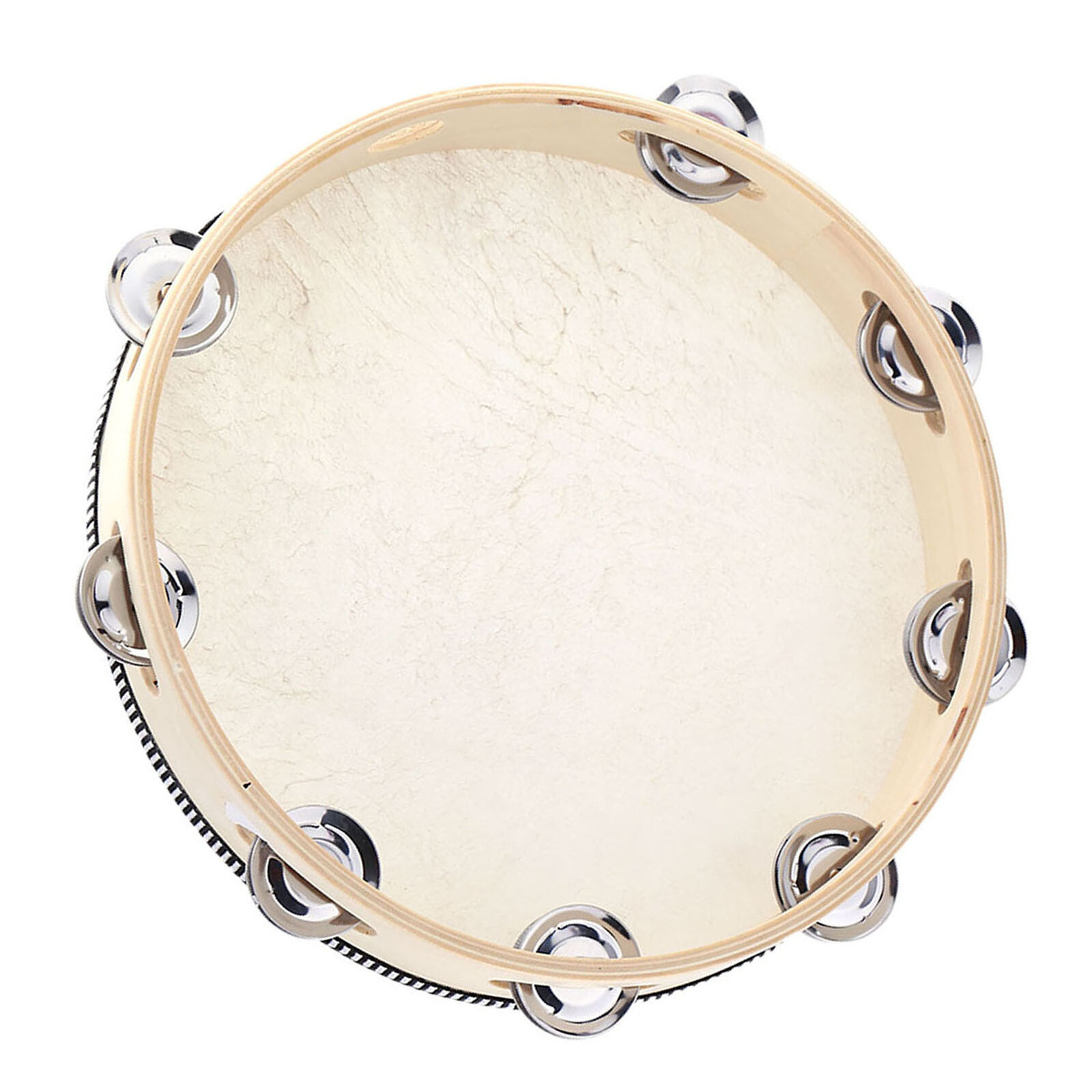 Onto track two was recorded George playing an additional guitar riff that started during the third verse (beginning the lyric "Don't ask me what I want it for"), Ringo's tambourine, and additional backing vocals from Paul and John with substantial chatter and the occasional whistle heard quietly in the final product. Two other overdubs recorded onto track two were eventually omitted from the final mix, these being guitar stabs in the second verse and Paul and John singing the falsetto harmonies “Anybody got a bit of money” three times in a row in measures three and four of the third verse, repeating it again in measures seven and eight. Onto track two was recorded George playing an additional guitar riff that started during the third verse (beginning the lyric "Don't ask me what I want it for"), Ringo's tambourine, and additional backing vocals from Paul and John with substantial chatter and the occasional whistle heard quietly in the final product. Two other overdubs recorded onto track two were eventually omitted from the final mix, these being guitar stabs in the second verse and Paul and John singing the falsetto harmonies “Anybody got a bit of money” three times in a row in measures three and four of the third verse, repeating it again in measures seven and eight.
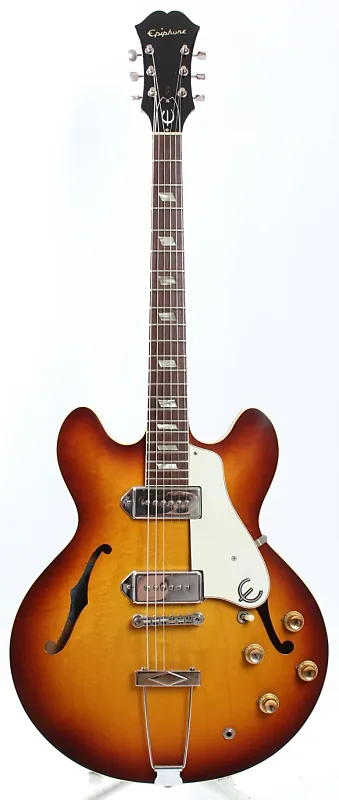 One additional overdub was performed on this day, this being the guitar solo. Geoff Emerick explains: “There was a bit of tension on that session, though, because George had a great deal of trouble playing the solo – in fact, he couldn’t even do a proper job of it when we slowed the tape down to half speed. After a couple of hours of watching him struggle, both Paul and George Martin started becoming quite frustrated – this was, after all, a Harrison song and therefore not something anyone was prepared to spend a whole lot of time on. So George Martin went into the studio and, as diplomatically as possible, announced that he wanted Paul to have a go at the solo instead. I could see from the look on Harrison’s face that he didn’t like the idea one bit, but he reluctantly agreed and then proceeded to disappear for a couple of hours. He sometimes did that – had a bit of a sulk on his own, then eventually came back.” One additional overdub was performed on this day, this being the guitar solo. Geoff Emerick explains: “There was a bit of tension on that session, though, because George had a great deal of trouble playing the solo – in fact, he couldn’t even do a proper job of it when we slowed the tape down to half speed. After a couple of hours of watching him struggle, both Paul and George Martin started becoming quite frustrated – this was, after all, a Harrison song and therefore not something anyone was prepared to spend a whole lot of time on. So George Martin went into the studio and, as diplomatically as possible, announced that he wanted Paul to have a go at the solo instead. I could see from the look on Harrison’s face that he didn’t like the idea one bit, but he reluctantly agreed and then proceeded to disappear for a couple of hours. He sometimes did that – had a bit of a sulk on his own, then eventually came back.”
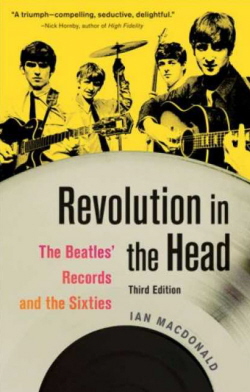 It is quite understandable that George would be upset that he was ousted as lead guitarist on his own song. However, Harrison's comments from 1987 show that he accepted this defeat with grace. “I was pleased to have Paul play that bit on ‘Taxman.’ If you notice, he did like a little Indian bit on it for me.” This reference referred to George’s recent infatuation with Indian music that permeated his artistic output at that time. This also may suggest that George was attempting to play a solo with that kind of flavor before Paul was asked to take over, possibly even asking him to play it that way. Ian MacDonald, in his book “Revolution In The Head,” describes Paul’s solo as “a savage seven-bar affair that picks up the octave jump in the riff, adding a scintillating pseudo-Indian descending passage en route.” Eyewitness Geoff Emerick agrees: "Paul’s solo was stunning in its ferocity – his guitar playing had a fire and energy that his younger band mates rarely matched – and was accomplished in just a take or two." It is quite understandable that George would be upset that he was ousted as lead guitarist on his own song. However, Harrison's comments from 1987 show that he accepted this defeat with grace. “I was pleased to have Paul play that bit on ‘Taxman.’ If you notice, he did like a little Indian bit on it for me.” This reference referred to George’s recent infatuation with Indian music that permeated his artistic output at that time. This also may suggest that George was attempting to play a solo with that kind of flavor before Paul was asked to take over, possibly even asking him to play it that way. Ian MacDonald, in his book “Revolution In The Head,” describes Paul’s solo as “a savage seven-bar affair that picks up the octave jump in the riff, adding a scintillating pseudo-Indian descending passage en route.” Eyewitness Geoff Emerick agrees: "Paul’s solo was stunning in its ferocity – his guitar playing had a fire and energy that his younger band mates rarely matched – and was accomplished in just a take or two."
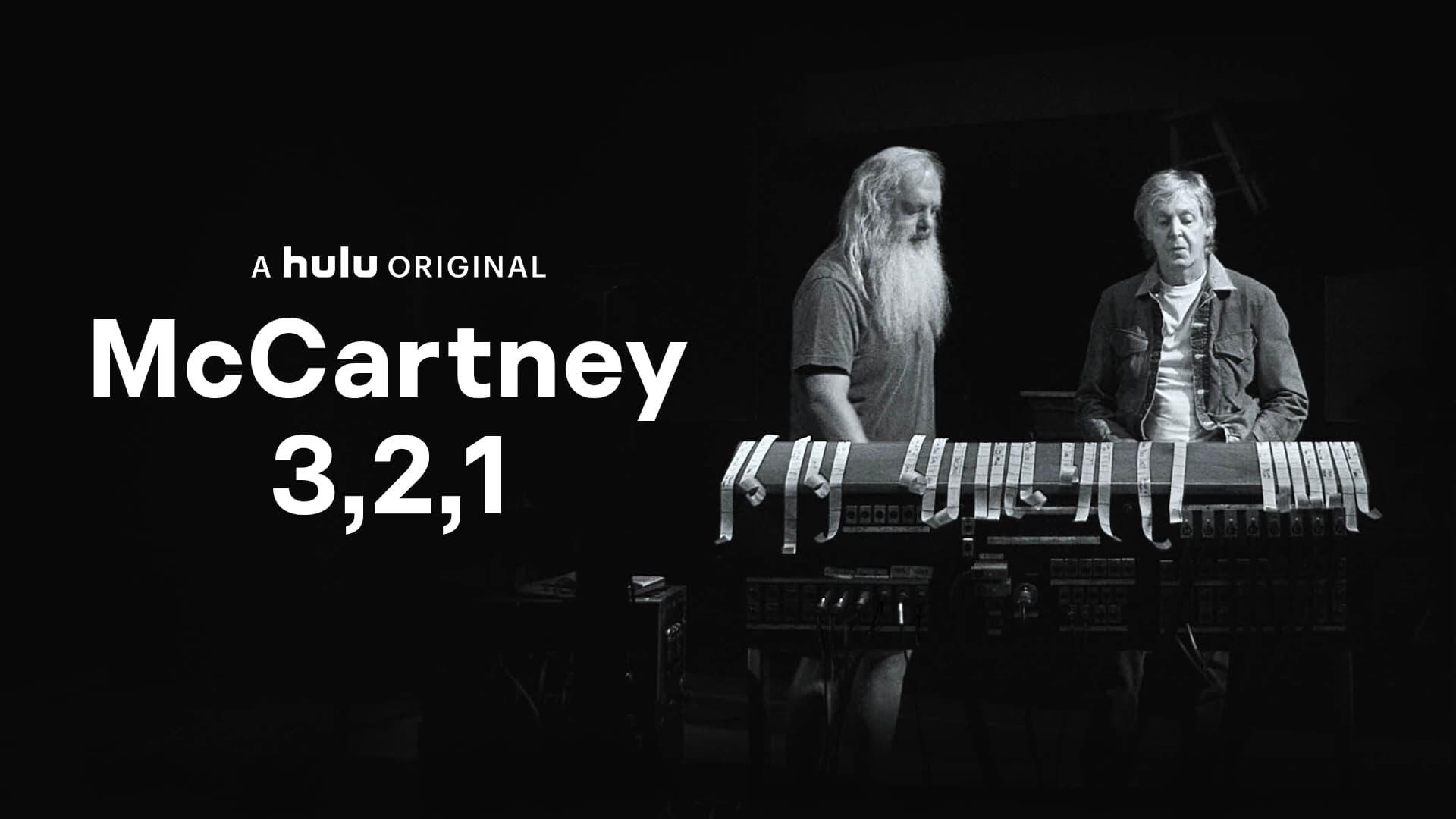 "It was kind an awkward thing," Paul explains in his 2021 Hulu documentary series "McCartney 3,2,1." "If you had a good idea for something, you'd say it, but often the other guy would say, 'Well, you play it,' y'know. There was a lot of freedom. So, we did that a lot. Like I think I talked a lot to George about the solo on 'Taxman.' And I think that's what happened. He said, 'Well, you play it!'...I wouldn't have thought about it or written it or anything. It'd just be like, the track's so cooking, that if we're going to have a solo, it should be just ridiculous. It was funny because it was like a double-edged sword. People were sort of saying, 'Couldn't you just play straighter?' And I'm going, 'I don't know, I think it kind of lends something, doing all this." "It was kind an awkward thing," Paul explains in his 2021 Hulu documentary series "McCartney 3,2,1." "If you had a good idea for something, you'd say it, but often the other guy would say, 'Well, you play it,' y'know. There was a lot of freedom. So, we did that a lot. Like I think I talked a lot to George about the solo on 'Taxman.' And I think that's what happened. He said, 'Well, you play it!'...I wouldn't have thought about it or written it or anything. It'd just be like, the track's so cooking, that if we're going to have a solo, it should be just ridiculous. It was funny because it was like a double-edged sword. People were sort of saying, 'Couldn't you just play straighter?' And I'm going, 'I don't know, I think it kind of lends something, doing all this."
 With this complete at 12:50 am the following morning, they adjourned for the evening. To hear precisely how it sounded at this point, listen to the version of the song as presented on the 1996 release “Anthology 2” or the 2022 "Deluxe" editions of "Revolver." Whether the band thought it was complete at this point is not known but likely. However, just under twelve hours later they would be back in EMI Studio Two for more work on the song. With this complete at 12:50 am the following morning, they adjourned for the evening. To hear precisely how it sounded at this point, listen to the version of the song as presented on the 1996 release “Anthology 2” or the 2022 "Deluxe" editions of "Revolver." Whether the band thought it was complete at this point is not known but likely. However, just under twelve hours later they would be back in EMI Studio Two for more work on the song.
 April 22nd, 1966, was that day and at 2:30 pm The Beatles were ready to finish the song off, or so they thought. The first thing on the agenda was a reduction mix of the song, turning "take 11" into "take 12," thus combining George and Paul's vocals from tracks three and four to track three of the new tape, which would allow for more overdubs to be added onto the now vacant track four. In the process, the "anybody got a bit of money" falsetto vocals from John and Paul were erased from track two, these being determined to be detracting from the lyrical flow of the song. April 22nd, 1966, was that day and at 2:30 pm The Beatles were ready to finish the song off, or so they thought. The first thing on the agenda was a reduction mix of the song, turning "take 11" into "take 12," thus combining George and Paul's vocals from tracks three and four to track three of the new tape, which would allow for more overdubs to be added onto the now vacant track four. In the process, the "anybody got a bit of money" falsetto vocals from John and Paul were erased from track two, these being determined to be detracting from the lyrical flow of the song.
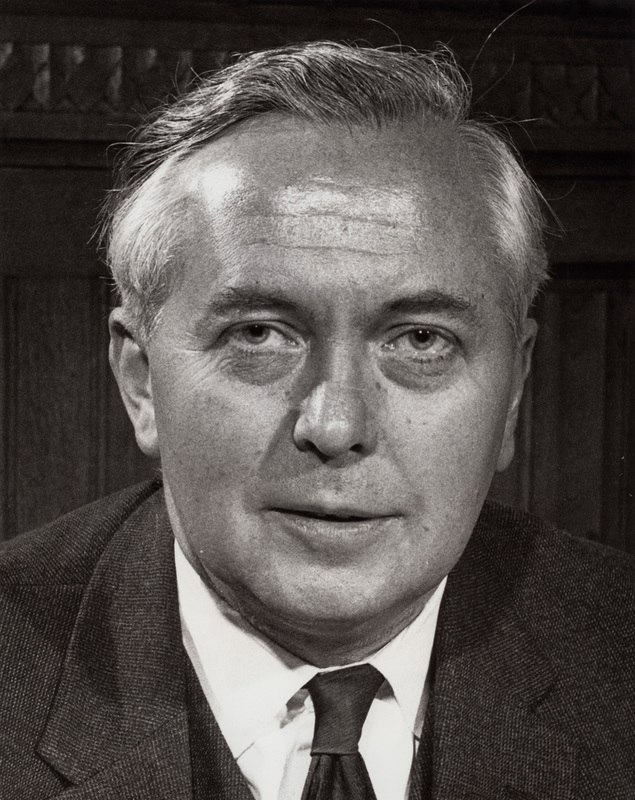 Onto the now vacant track four was Ringo on cowbell throughout most of the song (starting in the second verse) and Paul and John singing “Ah, ah, Mr. Wilson” and “Ah, ah, Mr. Heath” in replacement of the "anybody got a bit of money" harmonies that were just erased. This was in reference to Prime Minister Harold Wilson (leader of the Labour Party) and Sir Edward Heath (leader of the Conservative Party), both being the largest parties in British politics and, therefore, viewed as responsible for The Beatles tax issues. Harold Wilson approved the honors list for The Beatles to receive their MBE’s the previous year, and in return received the “honor” of being immortalized in one of their songs. In fact, references to both of their names mark the first living individuals to be specifically recognized in a Beatles song (apart from Ringo calling out for "George" to play a guitar solo in both the songs "Boys" and "Honey Don't"). Onto the now vacant track four was Ringo on cowbell throughout most of the song (starting in the second verse) and Paul and John singing “Ah, ah, Mr. Wilson” and “Ah, ah, Mr. Heath” in replacement of the "anybody got a bit of money" harmonies that were just erased. This was in reference to Prime Minister Harold Wilson (leader of the Labour Party) and Sir Edward Heath (leader of the Conservative Party), both being the largest parties in British politics and, therefore, viewed as responsible for The Beatles tax issues. Harold Wilson approved the honors list for The Beatles to receive their MBE’s the previous year, and in return received the “honor” of being immortalized in one of their songs. In fact, references to both of their names mark the first living individuals to be specifically recognized in a Beatles song (apart from Ringo calling out for "George" to play a guitar solo in both the songs "Boys" and "Honey Don't").
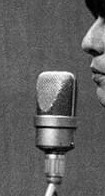 An interesting observation here is that the additional lead guitar track from George as well as Ringo's tambourine in the third verse are absent when the “Wilson/Heath” vocals appear, indicating that their vocal overdub was added after the guitar and tambourine overdubs were performed on this same day. There are also very quiet but audible clicks whenever this new vocal overdub was punched in. In addition, it was apparently determined at this point that Paul's solo would be repeated again at the conclusion of the song. At the conclusion of track four, therefore, George sang "me" during his final lyric "working for no one but me" in order to facilitate the edit to this section of the song with Paul's soon-to-be-added solo, which would then fade to conclude the track on the album. This edit wasn't made until later (as we will see). An interesting observation here is that the additional lead guitar track from George as well as Ringo's tambourine in the third verse are absent when the “Wilson/Heath” vocals appear, indicating that their vocal overdub was added after the guitar and tambourine overdubs were performed on this same day. There are also very quiet but audible clicks whenever this new vocal overdub was punched in. In addition, it was apparently determined at this point that Paul's solo would be repeated again at the conclusion of the song. At the conclusion of track four, therefore, George sang "me" during his final lyric "working for no one but me" in order to facilitate the edit to this section of the song with Paul's soon-to-be-added solo, which would then fade to conclude the track on the album. This edit wasn't made until later (as we will see).
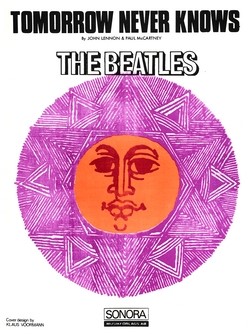 Approximately five hours later, at 7:30 pm, they now apparently felt the song was complete and moved on to performing more overdubs to “Mark I,” this being the working title of yet another classic “Revolver” track, “Tomorrow Never Knows.” This brought the session to a close at 11:30 pm. Approximately five hours later, at 7:30 pm, they now apparently felt the song was complete and moved on to performing more overdubs to “Mark I,” this being the working title of yet another classic “Revolver” track, “Tomorrow Never Knows.” This brought the session to a close at 11:30 pm.
The first mix of “Taxman,” this being a mono mix, was created on April 27th, 1966 in the control room of EMI Studio Three by George Martin, Geoff Emerick and 2nd engineer Phil McDonald. Although this and two other newly recorded songs were mixed on this day, all of them were re-done on a later date.
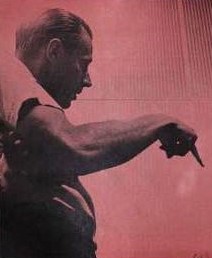 One final added touch was thought to be necessary to complete “Taxman,” this being recorded at the beginning of the May 16th, 1966 session at EMI Studio Two, which also began at 2:30 pm. It was deemed necessary at this point to once again overdub George singing "me" at the end of the song to facilitate the edit of the solo section that included Paul's searing guitar solo, which would then be faded to conclude the song. “I always thought that George’s strongest song on ‘Revolver’ was ‘Taxman,’” relates Geoff Emerick, “and George Martin must have agreed, since he decided to put it first on the album – the all-important spot generally reserved for the best song, since the idea is to try to capture the listener immediately.” One final added touch was thought to be necessary to complete “Taxman,” this being recorded at the beginning of the May 16th, 1966 session at EMI Studio Two, which also began at 2:30 pm. It was deemed necessary at this point to once again overdub George singing "me" at the end of the song to facilitate the edit of the solo section that included Paul's searing guitar solo, which would then be faded to conclude the song. “I always thought that George’s strongest song on ‘Revolver’ was ‘Taxman,’” relates Geoff Emerick, “and George Martin must have agreed, since he decided to put it first on the album – the all-important spot generally reserved for the best song, since the idea is to try to capture the listener immediately.”
 At some point during this eleven hour session, four mono mixes of “Taxman” were made (mixes two through five), the fourth attempt being deemed the best at this point. These were made in the control room of EMI Studio Two by the same EMI staff of George Martin, Geoff Emerick and Phil McDonald. They then performed a “tape copy” of “remix four,” but then at some point viewed this as not acceptable either, a bit more fine-tuning apparently being needed. At some point during this eleven hour session, four mono mixes of “Taxman” were made (mixes two through five), the fourth attempt being deemed the best at this point. These were made in the control room of EMI Studio Two by the same EMI staff of George Martin, Geoff Emerick and Phil McDonald. They then performed a “tape copy” of “remix four,” but then at some point viewed this as not acceptable either, a bit more fine-tuning apparently being needed.
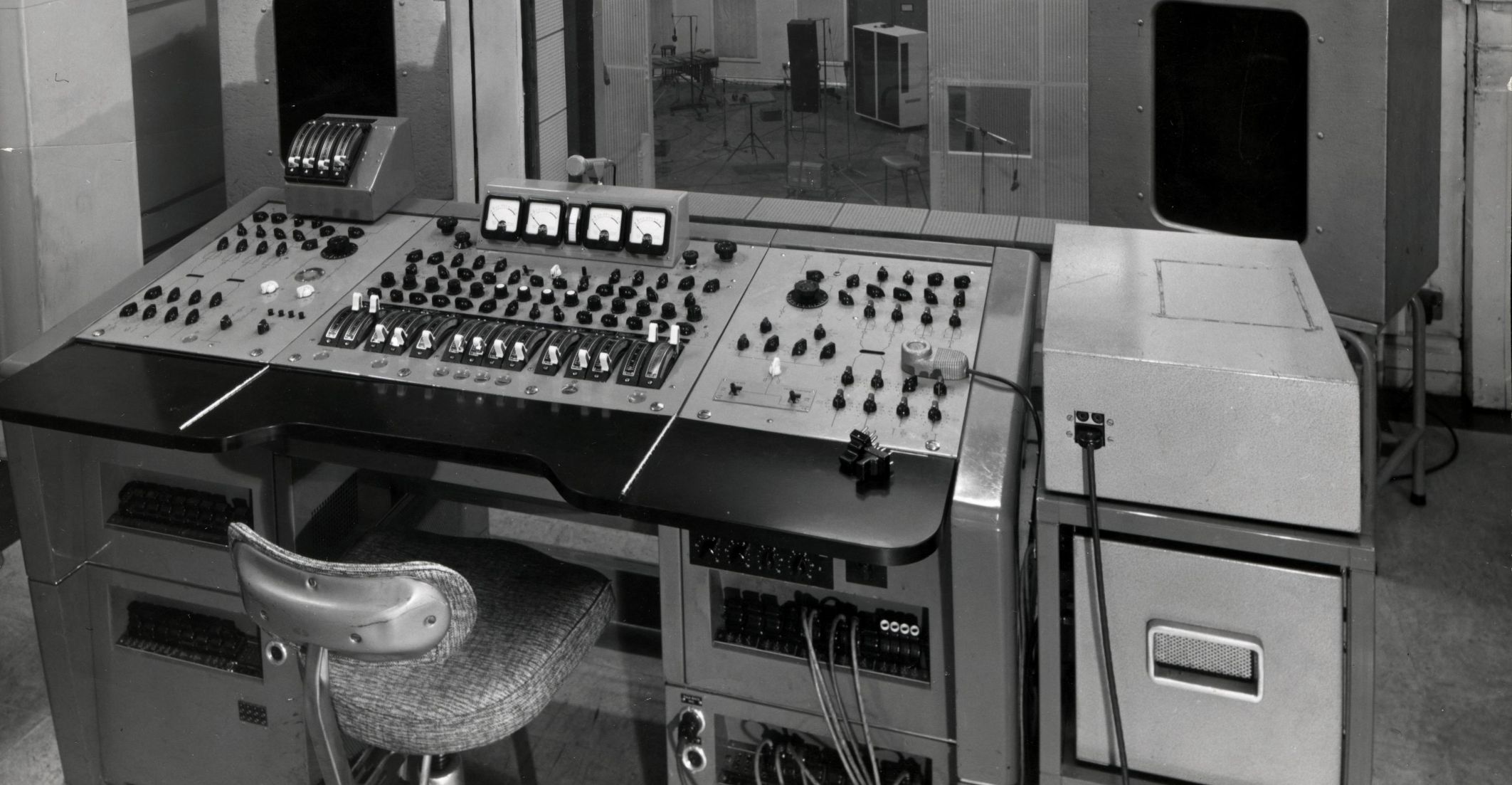 It wasn’t until over a month later, on June 21st, 1966, that the releasable mono and stereo mixes of “Taxman” were created. A lot of thought was obviously needed to get the song into the desired condition to be the lead-off track for their new masterpiece album. Therefore, with The Beatles present, the EMI team of George Martin, Geoff Emerick and Phil McDonald took to the work at hand in the EMI Studio Three control room with the musicians no doubt adding their preferences. It wasn’t until over a month later, on June 21st, 1966, that the releasable mono and stereo mixes of “Taxman” were created. A lot of thought was obviously needed to get the song into the desired condition to be the lead-off track for their new masterpiece album. Therefore, with The Beatles present, the EMI team of George Martin, Geoff Emerick and Phil McDonald took to the work at hand in the EMI Studio Three control room with the musicians no doubt adding their preferences.
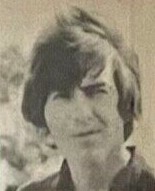 One decision was to eliminate the brief lead guitar accents in the second verse, which was easily done by omitting George's guitar work on track two in those two places. However, the evidence of this is apparent because of the absence of the tambourine playing during these strategic spots (listen again to “Anthology 2” and the Deluxe editions of 'Revolver") where the tambourine is present along with those short guitar passages. One decision was to eliminate the brief lead guitar accents in the second verse, which was easily done by omitting George's guitar work on track two in those two places. However, the evidence of this is apparent because of the absence of the tambourine playing during these strategic spots (listen again to “Anthology 2” and the Deluxe editions of 'Revolver") where the tambourine is present along with those short guitar passages.
 The second decision was more detailed and complicated to perform, this concerning Paul's guitar solo section for the song. “It was so good,” Geoff Emerick relates, “that George Martin had me fly it in again during the song’s fadeout.” Not only was that track "flown in," but that whole portion of the song (rhythm track and cowbell overdub) was superimposed on top of George’s last overdubbed lead vocal word “me.” The second decision was more detailed and complicated to perform, this concerning Paul's guitar solo section for the song. “It was so good,” Geoff Emerick relates, “that George Martin had me fly it in again during the song’s fadeout.” Not only was that track "flown in," but that whole portion of the song (rhythm track and cowbell overdub) was superimposed on top of George’s last overdubbed lead vocal word “me.”
 Since there is an overlapping of sounds from the finished master and the repeat of the guitar solo section of the song, not only were two mixes necessary to be made to edit together, but it needed to be overlapped in some way. It is suggested that a recording of the guitar solo section of the song was made and then strategically synced up with a mix of the body of the song that ends abruptly after the one-beat of the measure where George sings the word “me.” When listening to the isolated vocal track of the song, this is precisely where his vocal track cuts off – midway through the syllable. Since there is an overlapping of sounds from the finished master and the repeat of the guitar solo section of the song, not only were two mixes necessary to be made to edit together, but it needed to be overlapped in some way. It is suggested that a recording of the guitar solo section of the song was made and then strategically synced up with a mix of the body of the song that ends abruptly after the one-beat of the measure where George sings the word “me.” When listening to the isolated vocal track of the song, this is precisely where his vocal track cuts off – midway through the syllable.
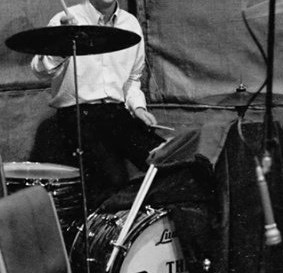 With this procedure in mind, two mono mixes of the song were made and then melded together to form what was released internationally as the mono version of the song. (They identified these mixes as five and six, when in actuality they were six and seven.) All of the instrument tracks are prominent in this mix with the overdubbed cowbell first appearing in the second verse after the lyric “five percent appear too small.” They then faded down the guitar solo mix just in time so that George’s lead vocals would not appear again. With this procedure in mind, two mono mixes of the song were made and then melded together to form what was released internationally as the mono version of the song. (They identified these mixes as five and six, when in actuality they were six and seven.) All of the instrument tracks are prominent in this mix with the overdubbed cowbell first appearing in the second verse after the lyric “five percent appear too small.” They then faded down the guitar solo mix just in time so that George’s lead vocals would not appear again.
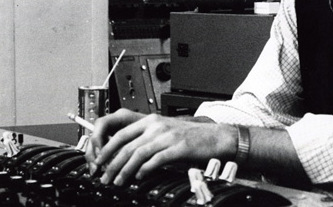 Then, on this same day, they repeated the same procedure for the internationally released stereo mix, creating two mixes (one for the body of the song and one for a repeat of the guitar solo section) and then melded them together. The instruments are a little more subdued than in the mono mix which gives slightly more emphasis to the vocals while the cowbell doesn’t appear until towards the end of the second verse, after the lyric “’cause I’m the taxman.” (The cowbell first appears in this mix with an audible “swoosh” sound that most likely occurred when that track was faded up, the engineers forgetting to fade it up earlier.) In this original stero mix the rhythm track is entirely on the left channel, the instrumental overdubs on the right channel and all of the vocals panned to the middle (with the exception of the “Wilson/Heath” overdub which is only on the right channel due to it being recorded onto the fourth track of the four-track tape). Then, on this same day, they repeated the same procedure for the internationally released stereo mix, creating two mixes (one for the body of the song and one for a repeat of the guitar solo section) and then melded them together. The instruments are a little more subdued than in the mono mix which gives slightly more emphasis to the vocals while the cowbell doesn’t appear until towards the end of the second verse, after the lyric “’cause I’m the taxman.” (The cowbell first appears in this mix with an audible “swoosh” sound that most likely occurred when that track was faded up, the engineers forgetting to fade it up earlier.) In this original stero mix the rhythm track is entirely on the left channel, the instrumental overdubs on the right channel and all of the vocals panned to the middle (with the exception of the “Wilson/Heath” overdub which is only on the right channel due to it being recorded onto the fourth track of the four-track tape).
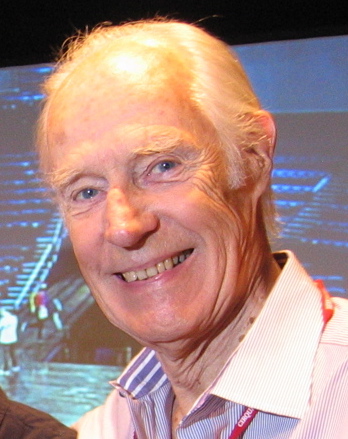 George Martin and engineer Geoff Emerick created a new mix of "take 11" of "Taxman" for inclusion on "Antholgy 2," this featuring the "Anybody got a bit of money" vocals, George's guitar stabs in the second verse, and the original conclusion of the song, these never being officially released as of this time. George Martin and engineer Geoff Emerick created a new mix of "take 11" of "Taxman" for inclusion on "Antholgy 2," this featuring the "Anybody got a bit of money" vocals, George's guitar stabs in the second verse, and the original conclusion of the song, these never being officially released as of this time.
 Sometime in 2022, producer Giles Martin and engineer Sam Okell created a new stereo mix of "Taxman" using AI ("Artificial Intelligence") to demix the guitar, bass and drums contained on track one of the master tape of the song for dividing it into a new stereo mix, this process being used by Peter Jackson in his "Get Back" film project in 2021. Peter Jackson's colleague Emile De La Rey worked on the mix of "Taxman" and, as Giles Martin relates, he "sent me guitar, bass and drums separately. You can even hear the squeak of Ringo’s foot pedal on his kick drum. That’s why we could do the stereo mix of 'Revolver.'" While the engineering team were at it, they also created a new mix of "take 11," a duplicate of what was included on "Anthology 2" in 1996. Sometime in 2022, producer Giles Martin and engineer Sam Okell created a new stereo mix of "Taxman" using AI ("Artificial Intelligence") to demix the guitar, bass and drums contained on track one of the master tape of the song for dividing it into a new stereo mix, this process being used by Peter Jackson in his "Get Back" film project in 2021. Peter Jackson's colleague Emile De La Rey worked on the mix of "Taxman" and, as Giles Martin relates, he "sent me guitar, bass and drums separately. You can even hear the squeak of Ringo’s foot pedal on his kick drum. That’s why we could do the stereo mix of 'Revolver.'" While the engineering team were at it, they also created a new mix of "take 11," a duplicate of what was included on "Anthology 2" in 1996.
A live recording of the song was done between December 1st and 17th, 1991, during George Harrison’s brief tour of Japan, this recording appearing on his 1992 album “Live In Japan.”
Song Structure and Style
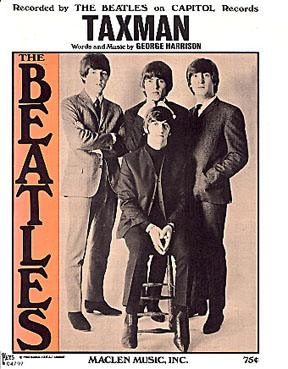 George appears to have dipped into Lennon’s arsenal by adding an extra measure here and there for effect in “Taxman” as was John’s habit (as appears in the verses of “You’ve Got To Hide Your Love Away” for example, or in his erratic measure/half-measure additions in the later Beatles catalog). The structure of “Taxman” itself seems to have been written-by-feel instead of following a prescribed pattern, resulting in a ‘verse/ verse/ bridge/ verse (solo)/ verse/ verse/ conclusion’ structure (or aabaaac). George appears to have dipped into Lennon’s arsenal by adding an extra measure here and there for effect in “Taxman” as was John’s habit (as appears in the verses of “You’ve Got To Hide Your Love Away” for example, or in his erratic measure/half-measure additions in the later Beatles catalog). The structure of “Taxman” itself seems to have been written-by-feel instead of following a prescribed pattern, resulting in a ‘verse/ verse/ bridge/ verse (solo)/ verse/ verse/ conclusion’ structure (or aabaaac).
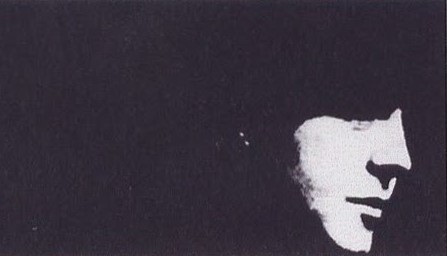 After the overdubbed / edited demented-sounding count-in for the song, a brief two-measure introduction of vamping begins procedures, introducing the bare-bones rhythm section of rhythm guitar / bass / drums that we’ll hear throughout the song uninterrupted. Harrison plays a double-tracked staccato rhythm guitar pattern on the syncopated two- and four-beats of the measures while Ringo plays a stark R&B groove on just the bass drum and snare. The most notable element is Paul’s bass guitar figure which acts as a lead guitar riff of sorts for the entire song. This zig-zagging line is only one measure long unlike the usual two-measure guitar riff they’re prone to use (see “Day Tripper” and the recently recorded “Paperback Writer” as prime examples) and is repeated without much letup throughout the song’s duration. After the overdubbed / edited demented-sounding count-in for the song, a brief two-measure introduction of vamping begins procedures, introducing the bare-bones rhythm section of rhythm guitar / bass / drums that we’ll hear throughout the song uninterrupted. Harrison plays a double-tracked staccato rhythm guitar pattern on the syncopated two- and four-beats of the measures while Ringo plays a stark R&B groove on just the bass drum and snare. The most notable element is Paul’s bass guitar figure which acts as a lead guitar riff of sorts for the entire song. This zig-zagging line is only one measure long unlike the usual two-measure guitar riff they’re prone to use (see “Day Tripper” and the recently recorded “Paperback Writer” as prime examples) and is repeated without much letup throughout the song’s duration.
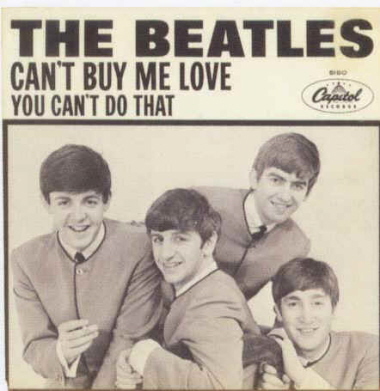 The first verse, like the majority of the verses, is an unusual thirteen measures long, elongated by a final measure to add a little breathing space at the end, although it could have worked well without it. The verses hint at a 12-bar blues pattern with an added measure at the end, the final five measures working as a refrain of sorts, this being where the key phrase of the song appears (not unlike “Can’t Buy Me Love” or “You Can’t Do That”). The first verse, like the majority of the verses, is an unusual thirteen measures long, elongated by a final measure to add a little breathing space at the end, although it could have worked well without it. The verses hint at a 12-bar blues pattern with an added measure at the end, the final five measures working as a refrain of sorts, this being where the key phrase of the song appears (not unlike “Can’t Buy Me Love” or “You Can’t Do That”).
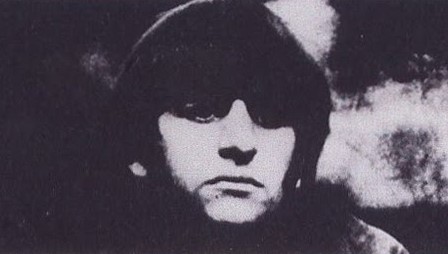 George’s double-tracked lead vocals appear just prior to the downbeat of the first measure, the third and seventh measures featuring a break in the tightly woven rhythmic groove with a double accent on the one- and two-beat. This is delivered by Ringo crashing his cymbals and George and Paul playing alarming D major/minor accents as if to interject the word “taxman” repeatedly throughout the verse even before we actually hear it sung. Afterwards, the rhythm section naturally falls right back into the R&B groove without missing a beat. George’s double-tracked lead vocals appear just prior to the downbeat of the first measure, the third and seventh measures featuring a break in the tightly woven rhythmic groove with a double accent on the one- and two-beat. This is delivered by Ringo crashing his cymbals and George and Paul playing alarming D major/minor accents as if to interject the word “taxman” repeatedly throughout the verse even before we actually hear it sung. Afterwards, the rhythm section naturally falls right back into the R&B groove without missing a beat.
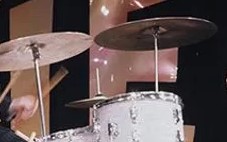 The group stays on the D chord throughout the first eight measures while the eighth measure allows Ringo to pound away on his kit ferociously to introduce the final five measures of this verse, which reveals who is addressing us, namely, “the taxman, yeah, I’m the taxman.” This is where the chords change and three part harmony is introduced with John and Paul joining in on the final four words. As the chords change, Paul’s bass riff alters to continue the same pattern while Ringo plays out the rest of the verse hitting his ride cymbal with his right hand, letting it sizzle to silence in the thirteenth measure. The group stays on the D chord throughout the first eight measures while the eighth measure allows Ringo to pound away on his kit ferociously to introduce the final five measures of this verse, which reveals who is addressing us, namely, “the taxman, yeah, I’m the taxman.” This is where the chords change and three part harmony is introduced with John and Paul joining in on the final four words. As the chords change, Paul’s bass riff alters to continue the same pattern while Ringo plays out the rest of the verse hitting his ride cymbal with his right hand, letting it sizzle to silence in the thirteenth measure.
The second verse is identical in structure to the first except for a couple of added elements, the first being a tambourine which is accented three times per measure (but is absent during the third and seventh measures because of the deletion of some lead guitar stabs during the mixing stage). The second new element is a cowbell which first appears in the third measure of the mono mix and the ninth measure of the stereo mix.
 The solitary nine-measure bridge of the song appears next, which alters the rhythm instrumentation somewhat, Paul bouncing up and down his bass neck in an impressive manner while the rhythm guitar chords change from D to C in both the fourth and eighth measures. John and Paul harmonize the first half of four rapid-fire lyric lines and repeat the last word while George finishes the thought by himself. Example: John and Paul sing “If you drive a car” and then repeat and extend the word “car” as a backdrop while George finishes the line “I’ll tax the street.” The final line in this pattern shows John and Paul elongating the word “walk” for two measures, the ninth and final measure of the verse climaxing with snare accents from Ringo, violent tambourine shaking and stimulating rhythm guitar chords. The solitary nine-measure bridge of the song appears next, which alters the rhythm instrumentation somewhat, Paul bouncing up and down his bass neck in an impressive manner while the rhythm guitar chords change from D to C in both the fourth and eighth measures. John and Paul harmonize the first half of four rapid-fire lyric lines and repeat the last word while George finishes the thought by himself. Example: John and Paul sing “If you drive a car” and then repeat and extend the word “car” as a backdrop while George finishes the line “I’ll tax the street.” The final line in this pattern shows John and Paul elongating the word “walk” for two measures, the ninth and final measure of the verse climaxing with snare accents from Ringo, violent tambourine shaking and stimulating rhythm guitar chords.
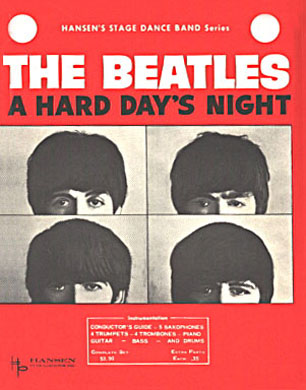 All of this leads to the song's climactic solo section that begins with a three-part harmony exclamation “TAXMAN,” this ushering in the blistering distorted lead guitar work of Paul McCartney. This Indian-inspired solo is performed above what is actually another verse with the rhythm section playing their usual “taxman” accents in the third and seventh measures. After the usual eighth measure drum fill, the final five measures repeat the refrain-like end of the verse with full vocals. Their habit of playing a solo during the first portion of a verse and then completing the verse with vocals is something that they used sporadically in their catalog, being heard in “A Hard Day’s Night” and even as early as “From Me To You.” Interestingly, the full rhythmic tambourine shaking from the ninth measure of the bridge continues throughout this entire solo/verse, even after the vocals enter in the final five measures. A quiet whistle, appearing on the background vocal track, is heard in the final measure of this section of the song. All of this leads to the song's climactic solo section that begins with a three-part harmony exclamation “TAXMAN,” this ushering in the blistering distorted lead guitar work of Paul McCartney. This Indian-inspired solo is performed above what is actually another verse with the rhythm section playing their usual “taxman” accents in the third and seventh measures. After the usual eighth measure drum fill, the final five measures repeat the refrain-like end of the verse with full vocals. Their habit of playing a solo during the first portion of a verse and then completing the verse with vocals is something that they used sporadically in their catalog, being heard in “A Hard Day’s Night” and even as early as “From Me To You.” Interestingly, the full rhythmic tambourine shaking from the ninth measure of the bridge continues throughout this entire solo/verse, even after the vocals enter in the final five measures. A quiet whistle, appearing on the background vocal track, is heard in the final measure of this section of the song.
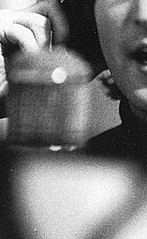 The fourth verse then begins, which slows the tambourine down to three accents per measure once again until the final four measures, where it once again returns to its rhythmic shaking. Two more distinctive elements are introduced in this verse, the first one being a repeating guitar riff which partially mimics the bass line heard underneath it. However, this guitar line cuts out when the second element shows up, this being harmonized falsetto vocals from John and Paul in the third and fourth measures. The first two syllables of their vocal line (“ah, ah”) fit perfectly on top of the accents of the third measure from the rhythm track with their final syllables (“Mr. Wilson”) descending afterward. This exact pattern is repeated in the seventh and eighth measures with the lyrics “ah, ah, Mr. Heath” while Ringo comes in with his usual drum fill. The final two measures of this verse show the lead guitar riff being altered by extending the final note higher than heard previously. The fourth verse then begins, which slows the tambourine down to three accents per measure once again until the final four measures, where it once again returns to its rhythmic shaking. Two more distinctive elements are introduced in this verse, the first one being a repeating guitar riff which partially mimics the bass line heard underneath it. However, this guitar line cuts out when the second element shows up, this being harmonized falsetto vocals from John and Paul in the third and fourth measures. The first two syllables of their vocal line (“ah, ah”) fit perfectly on top of the accents of the third measure from the rhythm track with their final syllables (“Mr. Wilson”) descending afterward. This exact pattern is repeated in the seventh and eighth measures with the lyrics “ah, ah, Mr. Heath” while Ringo comes in with his usual drum fill. The final two measures of this verse show the lead guitar riff being altered by extending the final note higher than heard previously.
 This is followed by yet another verse with the same arrangement but with more subtle differences. The background harmony vocals simply repeat the word “taxman” on top of the accents in both the third and seventh measures, extending the notes into the following measures respectively. Lead guitar playing continues to be present throughout all of the measures this time around and adds vibrato to the final note in the sixth and seventh measures. This is the only verse which is actually twelve measures long, one measure being chopped off at the end and replaced with a two measure conclusion in the unexpected key of F. The vocal line heard here (“and you’re working for no one but me”) acts as a deceleration to signal the end of the song. This is followed by yet another verse with the same arrangement but with more subtle differences. The background harmony vocals simply repeat the word “taxman” on top of the accents in both the third and seventh measures, extending the notes into the following measures respectively. Lead guitar playing continues to be present throughout all of the measures this time around and adds vibrato to the final note in the sixth and seventh measures. This is the only verse which is actually twelve measures long, one measure being chopped off at the end and replaced with a two measure conclusion in the unexpected key of F. The vocal line heard here (“and you’re working for no one but me”) acts as a deceleration to signal the end of the song.
 This, of course, would have been the end of the song if it weren’t for the splicing/editing work performed to repeat the amazing guitar solo section of the song heard earlier, which then fades off before the listeners are clued into this being the same actual performance they heard earlier in the song. This, of course, would have been the end of the song if it weren’t for the splicing/editing work performed to repeat the amazing guitar solo section of the song heard earlier, which then fades off before the listeners are clued into this being the same actual performance they heard earlier in the song.
George is obviously the primary focus of the song with his sinister vocals and syncopated rhythm guitar chops, both done with the appropriateness of the occasion. The mantra-style melody lines he wrote into the song are also primarily syncopated as is his habit (see his recently compositions “Think For Yourself” and “If I Needed Someone” as prime examples).
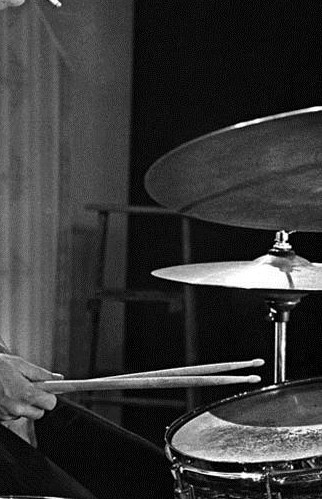 Lennon may have sat out instrumentally on this song, but his presence is definitely felt through his prominence in the background harmony work. Ringo shows his stuff with a tight percussion arrangement, most likely eliminating the use of a ride cymbal for most of the song per suggestion from either Paul or George Martin. Nonetheless, his attention to detail with drum fills and accents, as well as tambourine and cowbell, shows his as being an important role in pulling off the arrangement. Lennon may have sat out instrumentally on this song, but his presence is definitely felt through his prominence in the background harmony work. Ringo shows his stuff with a tight percussion arrangement, most likely eliminating the use of a ride cymbal for most of the song per suggestion from either Paul or George Martin. Nonetheless, his attention to detail with drum fills and accents, as well as tambourine and cowbell, shows his as being an important role in pulling off the arrangement.
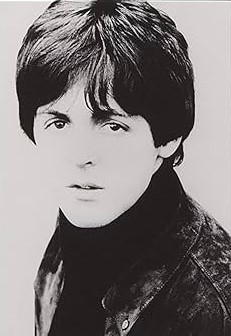 Being ever the “workaholic,” as Geoff Emerick called him, Paul was the busiest and most prominent musician on “Taxman.” His extraordinary bass work, played on his Rickenbacker bass for more tonal punch, permeates the track with his distinctively busy style. His sizzling lead guitar solo defies description and his harmony work is as precise as ever. Being ever the “workaholic,” as Geoff Emerick called him, Paul was the busiest and most prominent musician on “Taxman.” His extraordinary bass work, played on his Rickenbacker bass for more tonal punch, permeates the track with his distinctively busy style. His sizzling lead guitar solo defies description and his harmony work is as precise as ever.
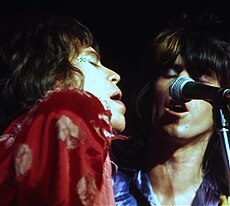 Possibly being imitated by Mick Jagger and Keith Richard in their recording “Sympathy For The Devil” a little later, George Harrison portrays himself as the evil "puppet master" who is telling his story about the control he has over his subjects. “Let me tell you how it will be,” he explains with a dogmatic extended finger, threatening his subjects not to complain about the meager five percent he’s allowing them to keep from their hard earned wages. “Be thankful I don’t take it all,” he sneers. Possibly being imitated by Mick Jagger and Keith Richard in their recording “Sympathy For The Devil” a little later, George Harrison portrays himself as the evil "puppet master" who is telling his story about the control he has over his subjects. “Let me tell you how it will be,” he explains with a dogmatic extended finger, threatening his subjects not to complain about the meager five percent he’s allowing them to keep from their hard earned wages. “Be thankful I don’t take it all,” he sneers.
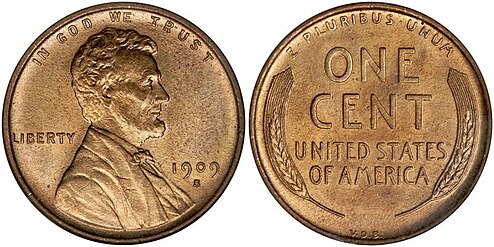 He’ll get you at every turn, George insists. Whether you’re “cold,” or you want to “drive,” “walk” or even “sit,” he’ll impose an exorbitant tax on you to satisfy these needs. Questions about his wanting so much of the wage earners money results in them ‘paying some more’ to him. The established practice of placing pennies on the eyes of corpses are not even to be trusted. “My advice for those who die,” he slyly asserts, “declare the pennies on your eyes.” Because after all, “I’m the taxman… and you’re working for no one but me,” he concludes. He’ll get you at every turn, George insists. Whether you’re “cold,” or you want to “drive,” “walk” or even “sit,” he’ll impose an exorbitant tax on you to satisfy these needs. Questions about his wanting so much of the wage earners money results in them ‘paying some more’ to him. The established practice of placing pennies on the eyes of corpses are not even to be trusted. “My advice for those who die,” he slyly asserts, “declare the pennies on your eyes.” Because after all, “I’m the taxman… and you’re working for no one but me,” he concludes.
American Releases
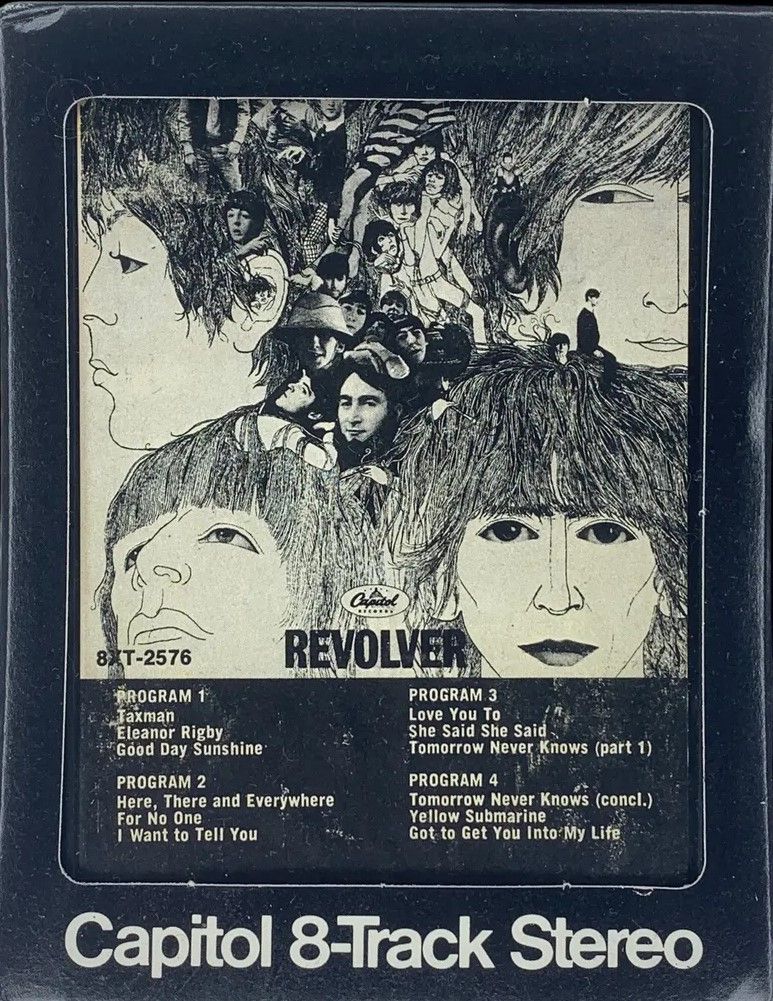 August 8th, 1966 was the American date of release for the remarkable “Revolver” album. Both the British and American versions begin with “Taxman,” making this George’s most strikingly popular original composition to date. This American version of the "Revolver" album got a compact disc release on January 21st, 2014, with both the mono and stereo versions contained on a single CD. August 8th, 1966 was the American date of release for the remarkable “Revolver” album. Both the British and American versions begin with “Taxman,” making this George’s most strikingly popular original composition to date. This American version of the "Revolver" album got a compact disc release on January 21st, 2014, with both the mono and stereo versions contained on a single CD.
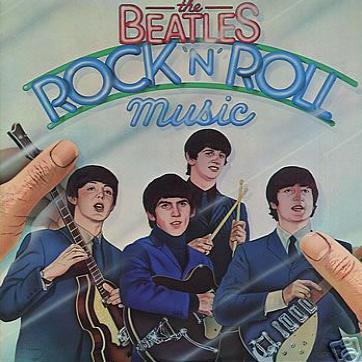 The song's next release was nearly ten years later (June 7th, 1976) on the double-album compilation “Rock ‘n’ Roll Music.” While George sings lead on two other tracks of this release, this is the only Harrison composition to make it onto the album. George Martin was duly consulted regarding the preparation of this album and, with access to only the Capitol mixes, decided it was necessary to reverse the right and left channels of the original stereo mix for this release. The song's next release was nearly ten years later (June 7th, 1976) on the double-album compilation “Rock ‘n’ Roll Music.” While George sings lead on two other tracks of this release, this is the only Harrison composition to make it onto the album. George Martin was duly consulted regarding the preparation of this album and, with access to only the Capitol mixes, decided it was necessary to reverse the right and left channels of the original stereo mix for this release.
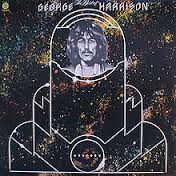 Later that year, on November 19th, 1976, the first George Harrison compilation album, entitled “The Best Of George Harrison,” was released. This featured his most popular solo singles on side two while selected George songs from the Beatle years comprised side one. “Taxman” was among the seven that made the grade. Later that year, on November 19th, 1976, the first George Harrison compilation album, entitled “The Best Of George Harrison,” was released. This featured his most popular solo singles on side two while selected George songs from the Beatle years comprised side one. “Taxman” was among the seven that made the grade.
On October 27th, 1980, the above mentioned “Rock ‘n’ Roll Music” album was divided into two volumes for budget sales, “Rock ‘n’ Roll Music, Volume 2” containing "Taxman."
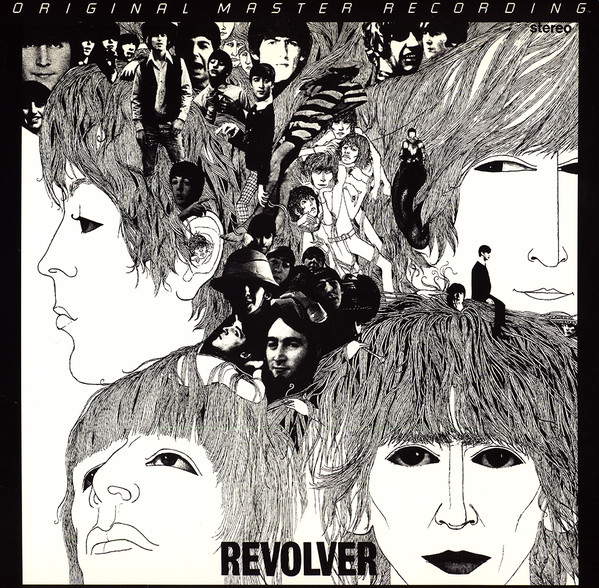 The first time the original British "Revolver” album was made available in America was the "Original Master Recording" vinyl edition released through Mobile Fidelity Sound Lab in 1985. This album included "Taxman" and was prepared utilizing half-speed mastering technology from the original master tape on loan from EMI. This version of the album was only available for a short time and is hard to find today. The first time the original British "Revolver” album was made available in America was the "Original Master Recording" vinyl edition released through Mobile Fidelity Sound Lab in 1985. This album included "Taxman" and was prepared utilizing half-speed mastering technology from the original master tape on loan from EMI. This version of the album was only available for a short time and is hard to find today.
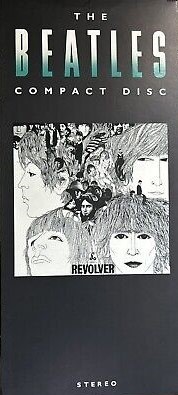 April 30th, 1987 was the official release date of the full fourteen-track “Revolver” album on compact disc, a vinyl edition coming out on July 21st, 1987. It was then remastered and re-released on CD on September 9th, 2009 and then on vinyl on November 13th, 2012. A remarkable newly mixed edition of "Revolver" created by Giles Martin was released on vinyl and CD on October 28th, 2022. April 30th, 1987 was the official release date of the full fourteen-track “Revolver” album on compact disc, a vinyl edition coming out on July 21st, 1987. It was then remastered and re-released on CD on September 9th, 2009 and then on vinyl on November 13th, 2012. A remarkable newly mixed edition of "Revolver" created by Giles Martin was released on vinyl and CD on October 28th, 2022.
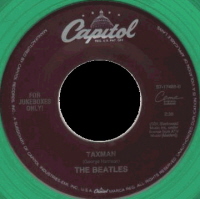 In January of 1994, Capitol then thought to issue “Taxman” as the b-side to "Birthday" on a Cema single for their new “For Jukeboxes Only” series. Although most of the singles were printed on green vinyl, between 25 to 50 pressings were on black vinyl, making these the most valuable to this day. In January of 1994, Capitol then thought to issue “Taxman” as the b-side to "Birthday" on a Cema single for their new “For Jukeboxes Only” series. Although most of the singles were printed on green vinyl, between 25 to 50 pressings were on black vinyl, making these the most valuable to this day.
For those interested in hearing their recording of the song "Taxman" as of April 21st, 1966 before the “Wilson/Heath” and cowbell overdubs and with the full ending, it became commercially available on March 18th, 1996 on the highly anticipated “Anthology 2” compilation album. The later-made fake countdown of the song was tacked on just for grins.
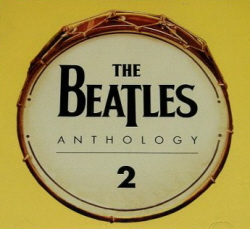 In conjunction with the above release, Apple Records put together the Anthology 2 Sampler CD which has this rare early version of “Taxman” as the fifth of its ten tracks. This was released simultaneously with the album and was sent to radio stations for promotion, it now being considered a rarity in itself. In conjunction with the above release, Apple Records put together the Anthology 2 Sampler CD which has this rare early version of “Taxman” as the fifth of its ten tracks. This was released simultaneously with the album and was sent to radio stations for promotion, it now being considered a rarity in itself.
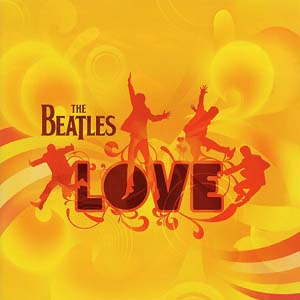 November 20th, 2006 was the release date for the Cirque du Soleil soundtrack “Love” featuring what turns out to be one of the most brilliantly conceived and executed effects of the album, this being the juxtaposition of placing the glimmering guitar solo from “Taxman” within the framework of “Drive My Car” on the track entitled “Drive My Car”/”The Word”/”What You’re Doing.” Not only are both of these songs in the same key (D major) but the solo length and rhythm fits perfectly into place as it melds strategically into the final two measures of the original “Drive My Car” solo. The fact that Paul happened to have performed both of these guitar solos may have helped as well! November 20th, 2006 was the release date for the Cirque du Soleil soundtrack “Love” featuring what turns out to be one of the most brilliantly conceived and executed effects of the album, this being the juxtaposition of placing the glimmering guitar solo from “Taxman” within the framework of “Drive My Car” on the track entitled “Drive My Car”/”The Word”/”What You’re Doing.” Not only are both of these songs in the same key (D major) but the solo length and rhythm fits perfectly into place as it melds strategically into the final two measures of the original “Drive My Car” solo. The fact that Paul happened to have performed both of these guitar solos may have helped as well!
 The interesting CD box set “The Beatles In Mono” was released on September 9th, 2009, which featured the entire catalog of mono mixes as heard in the '60s. The original mono mix of “Taxman,” with its somewhat louder instrumentation and earlier appearing cowbell, appears in this set, the vinyl edition first being released on September 9th, 2014. The interesting CD box set “The Beatles In Mono” was released on September 9th, 2009, which featured the entire catalog of mono mixes as heard in the '60s. The original mono mix of “Taxman,” with its somewhat louder instrumentation and earlier appearing cowbell, appears in this set, the vinyl edition first being released on September 9th, 2014.
 On October 28th, 2022, various new editions of the “Revolver” album were released that feature the amazing new stereo mix by Giles Martin. The “Special Edition Deluxe 2CD Set” features “Taxman” in its new stereo mix as well as “take 11” from the 1966 session tapes. The “Deluxe Edition,” which is available as a 5 CD box set and a 4LP / 1 EP box set, includes these versions as well as the original mono master from 1966. The 2022 Giles Martin stereo mix of the album was also made available for the first time as a vinyl picture disc for a limited time. On October 28th, 2022, various new editions of the “Revolver” album were released that feature the amazing new stereo mix by Giles Martin. The “Special Edition Deluxe 2CD Set” features “Taxman” in its new stereo mix as well as “take 11” from the 1966 session tapes. The “Deluxe Edition,” which is available as a 5 CD box set and a 4LP / 1 EP box set, includes these versions as well as the original mono master from 1966. The 2022 Giles Martin stereo mix of the album was also made available for the first time as a vinyl picture disc for a limited time.
Also of interest is the July 13th, 1992 release of “Live In Japan,” the concert performance of “Taxman” by George and friends the previous December appearing therein.
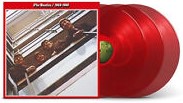 A new 50th Anniversay edition of the compilation album "The Beatles / 1962 - 1966" (aka "The Red Album") was released on November 10th, 2023. This new expanded release included 12 additional songs for a total of 38 tracks, including the 2022 mix of "Taxman" detailed above, and was made available as a double CD and as a triple vinyl release on both black and red vinyl. A new 50th Anniversay edition of the compilation album "The Beatles / 1962 - 1966" (aka "The Red Album") was released on November 10th, 2023. This new expanded release included 12 additional songs for a total of 38 tracks, including the 2022 mix of "Taxman" detailed above, and was made available as a double CD and as a triple vinyl release on both black and red vinyl.
Live Performances
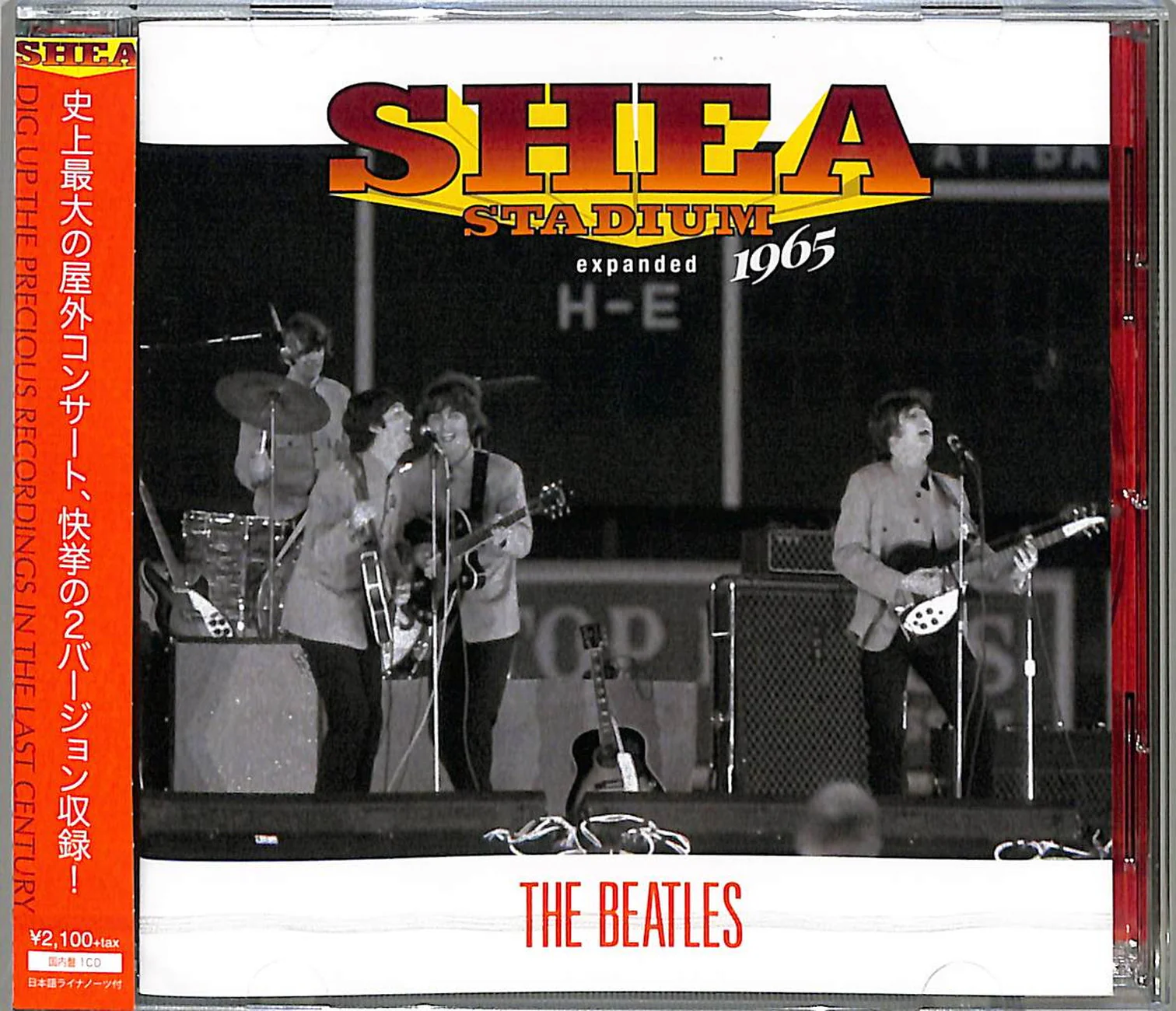 Four days after “Revolver” was released in the US, they began their last American tour. However, if you expected them to perform any songs from their new album, you were to be sorely disappointed. We can only imagine what it would be like to hear the explosive “Taxman” on stage but, as it was, George continued to sing “If I Needed Someone” for his vocal contribution to their short set. To help us play pretend, we can view the animated group performing the song in Japan in The Beatles version of the video game “Rock Band.” Four days after “Revolver” was released in the US, they began their last American tour. However, if you expected them to perform any songs from their new album, you were to be sorely disappointed. We can only imagine what it would be like to hear the explosive “Taxman” on stage but, as it was, George continued to sing “If I Needed Someone” for his vocal contribution to their short set. To help us play pretend, we can view the animated group performing the song in Japan in The Beatles version of the video game “Rock Band.”
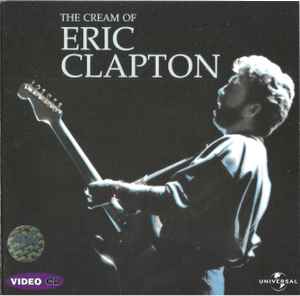 This is not to say that it hadn’t been sung by George on stage. As mentioned above, his brief Japanese tour between December 1st and 17th, 1991 included many Beatles classics including “Taxman.” With the original “Revolver” count-in played over the loudspeakers, they launch into a nearly four minute version of the song featuring two great lead guitar solos by Eric Clapton. Also includeed are an additional verse and bridge. The new verse reads: “If I reduce it again, you’ll see (ah, ah, Boris Yeltsin) get back more at the V.A.T. (ah, ah, Mr. Bush)” The new bridge: “If you get a head, I’ll tax your hat, If you get a pet, I’ll tax your cat, If you wipe your feet, I’ll tax the mat, If you’re overweight, I’ll tax your fat." This is not to say that it hadn’t been sung by George on stage. As mentioned above, his brief Japanese tour between December 1st and 17th, 1991 included many Beatles classics including “Taxman.” With the original “Revolver” count-in played over the loudspeakers, they launch into a nearly four minute version of the song featuring two great lead guitar solos by Eric Clapton. Also includeed are an additional verse and bridge. The new verse reads: “If I reduce it again, you’ll see (ah, ah, Boris Yeltsin) get back more at the V.A.T. (ah, ah, Mr. Bush)” The new bridge: “If you get a head, I’ll tax your hat, If you get a pet, I’ll tax your cat, If you wipe your feet, I’ll tax the mat, If you’re overweight, I’ll tax your fat."
George also performed "Taxman" during a benefit concert for the Natural Law Part on April 6th, 1992 at the Royal Albert Hall in London.
Conclusion
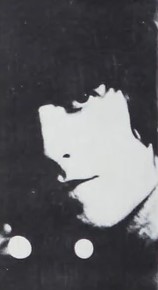 While it is true that Harrison's “Taxman” is a pseudo political song depicting the band's financial concerns at the time – a time long past – it does not come across as dated today, many decades later. In fact, it wears very well in modern society. Who of us doesn’t wish they didn’t have to pay out a good percentage of their hard-earned wages to a government that they don’t fully agree with, no matter what country they live in? And in the US, it’s no coincidence that this Beatles classic gets a whole lot of airplay on and around April 15th of every year! While it is true that Harrison's “Taxman” is a pseudo political song depicting the band's financial concerns at the time – a time long past – it does not come across as dated today, many decades later. In fact, it wears very well in modern society. Who of us doesn’t wish they didn’t have to pay out a good percentage of their hard-earned wages to a government that they don’t fully agree with, no matter what country they live in? And in the US, it’s no coincidence that this Beatles classic gets a whole lot of airplay on and around April 15th of every year!
Song Summary
“Taxman”
Written by: George Harrison
-
Song Written: April, 1966
-
Song Recorded: April 21, 22 & May 16, 1966
-
First US Release Date: August 8, 1966
-
First US Album Release: Capitol #ST-2576 “Revolver”
-
US Single Release: Capitol Cema #S7-17488
-
Highest Chart Position: n/a
-
British Album Release: Parlophone #PCS 7009 “Revolver”
-
Length: 2:36
-
Key: D major
-
Producer: George Martin
-
Engineers: Geoff Emerick, Phil McDonald
Instrumentation (most likely):
-
George Harrison – Lead Vocals, Rhythm and Lead Guitar (1961 Sonic Blue Fender Stratocaster)
-
Paul McCartney - Bass Guitar (1964 Rickenbacker 4001S), Lead Guitar (1962 Epiphone ES-230TD Casino), Harmony Vocals
-
John Lennon - Harmony Vocals
-
Ringo Starr – Drums (1964 Ludwig Super Classic Black Oyster Pearl), maracas, cowbell, tambourine
Written and compiled by Dave Rybaczewski
|
IF YOU WOULD LIKE TO MAKE A DONATION TO KEEP THIS WEBSITE UP AND RUNNING, PLEASE CLICK BELOW!
Sign Up Below for our MONTHLY BEATLES TRIVIA QUIZ!
|